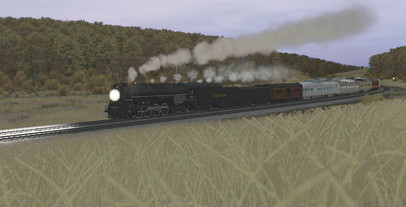HOME | DD
 Dragonthunders — TFiF: Aracnotyran
Dragonthunders — TFiF: Aracnotyran

Published: 2016-07-26 02:03:37 +0000 UTC; Views: 16109; Favourites: 216; Downloads: 49
Redirect to original
Description
Arachnids, especially spiders, have proved to be a very prosperous group of carnivorous arthropods from the Carboniferous that have remained almost unchanged, but quite successful and they were able to conquer various terrains and trophic levels throughout the planet. In the long term, this invariance is maintained, and despite the potentially catastrophic events that may annihilate much of them will overlap and return to diversify. This high resistance will likely help overcome many of the potential disasters that may confront in the next few hundred million years.
After the mass extinction of Phanerozoic (690 million years in the future), the earth was in an ecological state so degraded that many of the animals, specially almost all the vertebrates that survived were in a period of evolutionary "stagnation" in a way that any recovery would last tens of millions of years, much more than what it took to recover to them after the Permian extinction. Moreover, some varieties of invertebrates took advantage of this event to expand, and for the next 100 million years, an "age of invertebrates" started in which the giant arthropods reappeared. This unique event has been caused by several factors as the regeneration of vegetation on a global scale, the increasing oxygen levels and temperatures, to a degree never before seen since Paleozoic times, coupled with the lack of direct competition of advanced vertebrates. It has created the ideal environment for the return of these ancient beings. The boom period of arthropods beings and a number of armored creatures is called "Ostracogene" an age of giant invertebrates, which begin to 739 million years and end in 796 million years.
One of these examples lives in a corner of a sub-continent around the pole, were also there are a fairly unique variety of large arthropods, where with only the restrictions of their exoskeletons, have grown to exceptional lengths, specially one of the biggest spider ever. Being the largest land predator in the territory, the Aracnotyran (Graviphosoidea gigas) is a species of arachnid belonging to a group that appeared during the early Triassic, the suborder Opisthothelae, which despite the time, have managed to retain its familiar appearance. It has a body length of 60-85 cm and including its limbs of up to 1.4 meters and weighing average of 5 to 6 kilograms. This inhabit in the floor of the forest most near bodies of water at an average distance of between 5 to 12 meters from the shore. In a convergent way, they have a similar appearance to a tarantula, but with a greater length of legs, and with reddish and grayish body coloration, but something interesting is that like their extinct less big relatives, to make the oxygen transport more efficient has developed proteins like hemocyanine. It has a relatively slow speed; however when are hunting is able to cover short distances of up to 2m in a jump.
As is evident, it is a large carnivore that feeds primarily on insects and other medium-sized invertebrates, however, its main prey is one of the very few vertebrates that have managed to spread and reach the territory of large spiders, the tardiavids, in this case some of many of the semiaquatic species that get that part of the planet. These spiders travel near the areas where these birds gather, and when achieve to locate the closest prey to catch, it jumps and if is necessary, run, until it can catch and stabs the poor tardiavid with its long fangs.
Throughout the Ostracogene, these great monsters spiders are one of the kings of its kingdom in one of the corners of the planet, standing out among many others, however, with the end of the period and the return of vertebrates to the top, the great reign of these giant arachnids would end permanently, and all of them will vanish between the time.



























